Published on: March 6, 2024
3D Image Conversion: Everything YOU Need to Know About Tools and Techniques
Author: Lauren Smith

Discovering the magic of 3D image technology can feel a bit like stumbling upon a secret passage in an old castle. An everyday photo, flat and static, is the castle’s deceiving exterior. Yet, as soon as the particular know-how is applied, suddenly you’re walking in a three-dimensional photorealistic environment, as vibrant as life itself.
We’re delving into the third dimension where flat images are reimagined into 3D artistry. Framed through the lens of advanced tools and techniques, 3D image conversion becomes accessible, even for those who are still novices. Along this digital journey, we’ll meet savvy software, ground-breaking graphic techniques, and without a doubt, your own unfolding creativity.
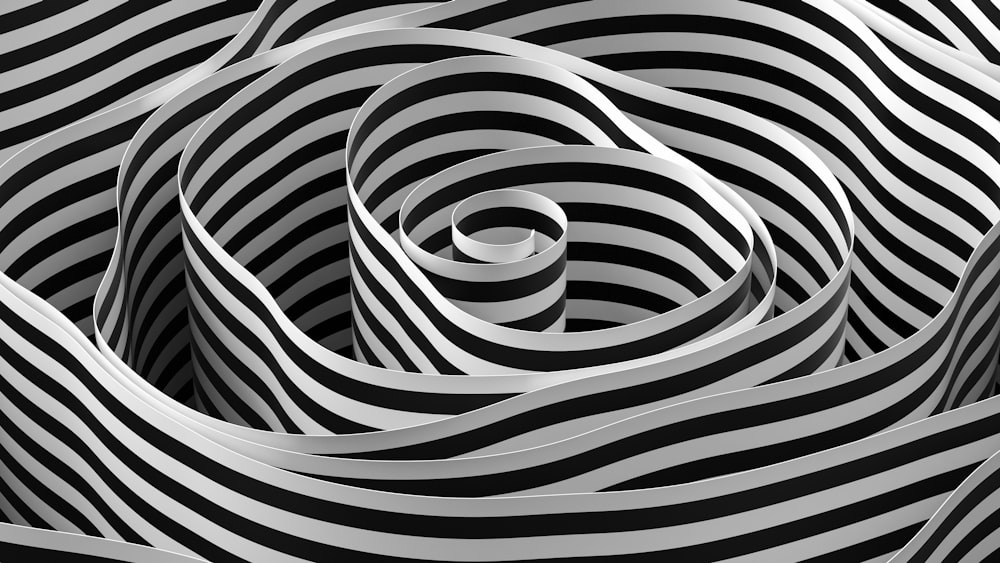
Unveiling the magic: Understanding 2D to 3D image conversion
- Get introduced to the process behind 2D to 3D image conversion.
- Learn about the vital role algorithms play in this process.
- See how the power of 2D to 3D image conversion is utilized in real-world applications.
The science behind 2D to 3D conversion: An overview
Ever wondered how a flat, two-dimensional image becomes a three-dimensional, virtual piece of art? Let’s unveil the magic behind this transformation. 2D to 3D image conversion is a combination of ingenious technology and artistic finesse.
The process is based on a concept called depth mapping, where each point in a 2D image is assigned a depth value. The depth gives 3D space to the points of the flat image, creating the illusion of depth and form. The intricacy of this process produces virtual marvels, which were once confined to the realms of our imagination.
To truly understand this transformation, you must first know how our eyes perceive depth. In simple terms, our eyes view and comprehend depth based on the relationship between objects, their sizes, and their proximity to us. Similarly, in 2D to 3D image conversion, this perception of depth is artificially created to achieve stunning visuals.
The role of algorithms in 2D to 3D conversion
Behind every successful 2D to 3D image conversion, there are complex algorithms carrying out intricate computations. In essence, these algorithms act as the backbone of the conversion process.
When it comes to creating 3D images, algorithms are used to calculate the depth at which each point in the image must be placed. They determine the right color, texture, and size of every element in the image to give it a natural appearance. These algorithms are highly efficient models, so much so that the 3D images generated are not only visually arresting but also realistic.
Algorithms such as depth

Real-life applications of 2D to 3D image conversion
So, where do we see these fascinating 3D images in our daily lives? You might be surprised to know that 2D to 3D image conversion has infiltrated a wide range of industries and real-world objects.
In the medical field, 3D images have revolutionized the patient diagnosis process. They allow doctors to view complex anatomical structures from various angles, thereby enabling more accurate diagnoses and treatments.
The entertainment industry is also reaping the benefits of 3D innovation. For instance, many films are initially shot in 2D, then later converted into 3D using state-of-the-art conversion processes to enhance the audience’s viewing experience. 3D animations, video games, and VR experiences – all rely heavily on 2D to 3D image conversion.
Even in the design and manufacturing industries, the impact of 3D images is substantial. 3D models of products or infrastructure help designers and engineers visualize and modify their designs before the actual production or construction process begins. Consequently, it saves both time and resources, enhancing the efficiency of these industries.
By understanding the science and implementation of 2D to 3D image conversion, we can better appreciate the magic it brings into various sectors around us.
Top 5 3D image conversion tools in 2024
- Shortlisting the best tools to convert 2D to 3D.
- Pros, cons, and features of each tool.
- Informative comparison to assist in decision-making.
Autodesk Maya
Autodesk Maya is a heavyweight contender in the realm of 3D image conversion. It’s a powerful 3D modeling, animation, simulation, and rendering software widely used in the film, television, and gaming industries, as well as in architectural visualization. This tool offers a comprehensive suite of tools that cater to the demands of professional artists and designers. It’s great for creating characters and visual effects.
- Comprehensive 3D modeling: Maya provides a robust set of modeling tools that support the creation of both organic and hard-surface models. Users can work with polygon, subdivision, and NURBS modeling to craft detailed characters, environments, and props.
- Advanced animation tools: Maya’s animation toolkit includes features for keyframe animation, procedural animation, and character rigging. It also offers a sophisticated graph editor and a nonlinear animation editor for intricate animation control and editing.
- Dynamic simulation and effects: This tool excels in creating realistic simulations for cloth, hair, fluids, and particles. Its dynamic simulation tools allow for the creation of complex physical effects like explosions, water flows, and fabric movement.
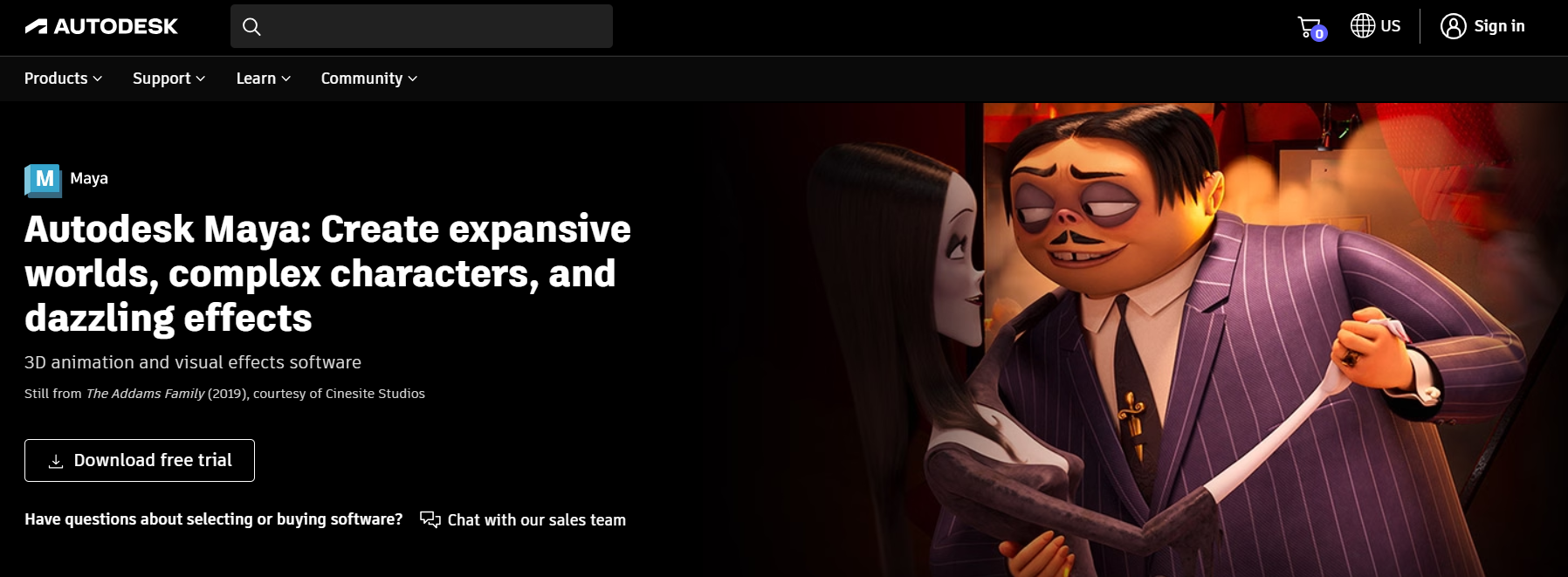
On the flip side, here are some of the challenges with Maya:
- Steep learning curve: Maya’s extensive range of features and capabilities means it has a steep learning curve. New users, especially those without prior experience in 3D modeling and animation, may find it overwhelming to master the software’s functionalities.
- High system requirements: The system demands high computing power for smooth operation, especially for complex scenes, high-quality rendering, and simulations. Users need to invest in powerful hardware to run Maya effectively, which can be a significant expense.
- Cost: Autodesk Maya is expensive software, with its subscription model posing a considerable cost for freelancers, small studios, or educational institutions. This cost can be prohibitive for those with limited budgets. it costs $235 per month or $1,875 per year.
Blender
Blender is a comprehensive, open-source 3D creation suite that supports the entirety of the 3D pipeline—modeling, rigging, animation, simulation, rendering, compositing, motion tracking, even video editing, and game creation. Its versatility and zero cost make it an attractive option for hobbyists, indie developers, and professionals alike. Here are some of the key features of Blender as it relates to creating and manipulating 3D images:
- Modeling: Blender offers quite a few modeling tools for creating, transforming, and editing your online digital model. It supports polygonal modeling, sculpting for high-detail models, and NURBS surfaces, allowing for the creation of both organic and hard-surface objects.
- Sculpting: The platform’s sculpting tools are highly regarded, providing artists with the ability to create detailed and complex shapes. Dynamic topology, voxel re-meshing, and multiresolution sculpting are some of the features that facilitate these high-detail sculpting workflows.
- Rendering: Blender comes with two powerful renderers: Cycles, a path-tracer engine for realistic rendering, and Eevee, a real-time renderer for quick previews and animation playback in just a few clicks. Both renderers support features like volumetrics, subsurface scattering, and motion blur.
- Cost: This software will transform images to 3D absolutely free.
Now a few of the downsides to this tool:
- Performance with high-poly models: While Blender is capable of handling complex scenes and high-poly models, users with less powerful hardware may experience performance issues. This can be particularly challenging during 3D conversion tasks that involve detailed models or large datasets, as it may lead to slower response times and longer rendering periods.
- Limited CAD features: For users looking to convert 2D designs into 3D models, especially in the context of engineering or architectural work, Blender may not be as efficient as dedicated CAD (Computer-Aided Design) software, so mechanical engineers and architects may need to give this one a pass.
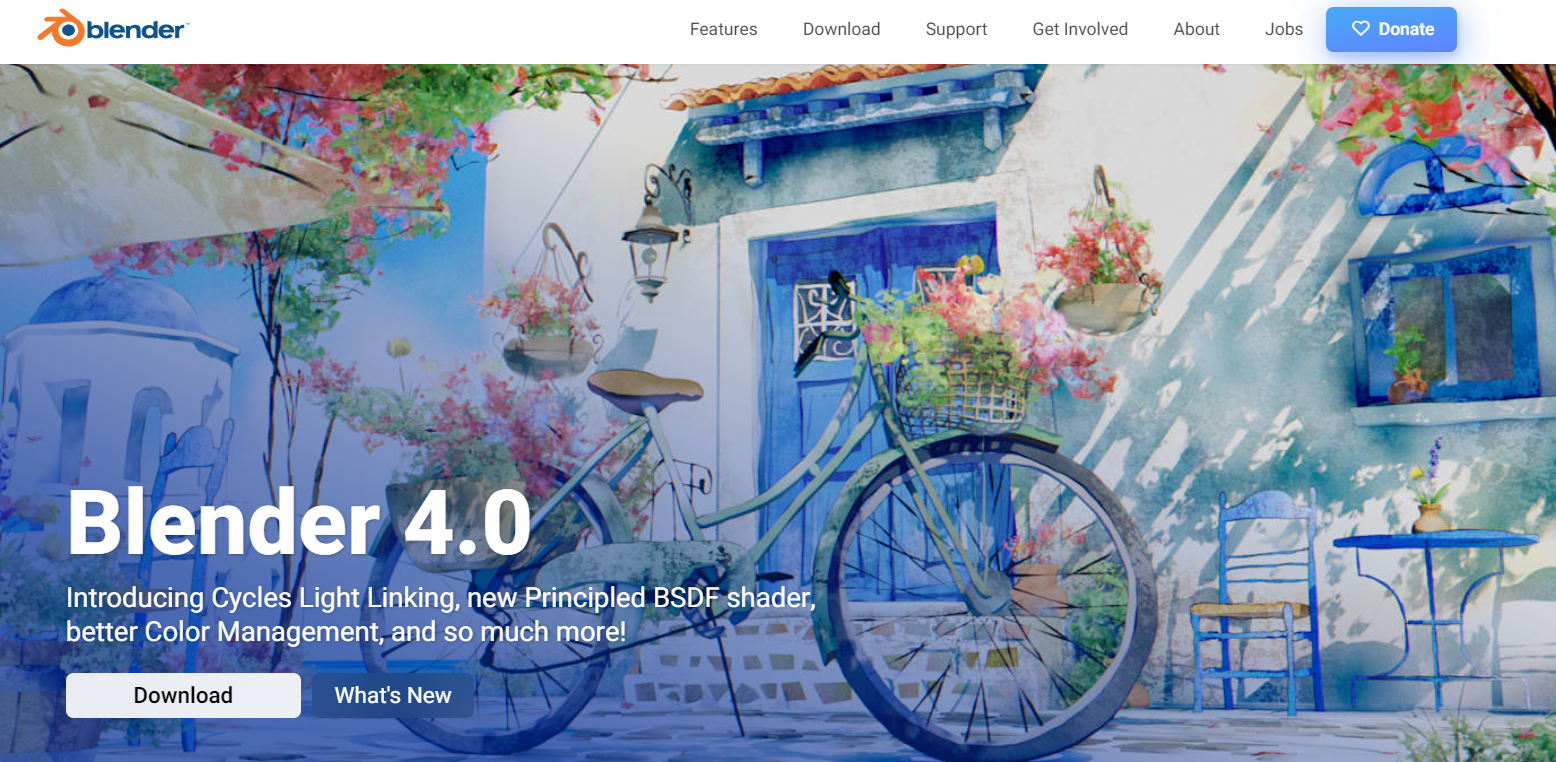
SketchUp
Entering the arena next is SketchUp. It strikes the perfect balance between not being overly complex and providing just enough controls for plenty of creativity.
Regrettably, the software can sometimes be slow in rendering the final image, especially for large, complex designs. It also has a small learning curve.
The cost is mid-range and the basic version is $119 per year. There is also the Pro plan, which costs $339 annually, and the Studio plan, which goes for $749 per year. They even have a limited free plan to get you started.
SketchUp is widely used across various industries, including architecture, interior design, woodworking, and video game design, for creating and editing 3D models. Its user-friendly interface and extensive feature set make it accessible to professionals and hobbyists alike. Below are some of the notable features of SketchUp:
- Intuitive interface: SketchUp is designed with a straightforward and intuitive interface that allows users to quickly learn and navigate the software. It’s easy to upload and edit an image file while still providing powerful tools for professionals.
- 3D Warehouse: The 3D Warehouse is an extensive online library where users can find and download millions of free 3D models, ranging from furniture and appliances to entire buildings, which can be used to quickly populate and enhance projects.
- Extension Warehouse: The software supports various plugins available through the Extension Warehouse, allowing users to extend its functionality with tools and features developed by third-party developers.
- Real-time Shadows: SketchUp offers real-time shadow rendering, enabling users to analyze the sun exposure and shadow effects on their models at different times of the day and year, which is particularly useful for architectural and landscape design.
Despite its strengths, SketchUp has some drawbacks that users may encounter:
- Performance issues with large models: As the complexity and size of a 3D model increase, SketchUp can experience performance slowdowns or become less responsive. This can be particularly challenging for users working on large-scale or highly detailed projects.
- Limited rendering capabilities: While SketchUp is excellent for modeling, its built-in rendering capabilities are somewhat basic compared to specialized rendering software. Users often need to rely on third-party plugins for high-quality photorealistic renders, which can add to the overall cost and learning curve.
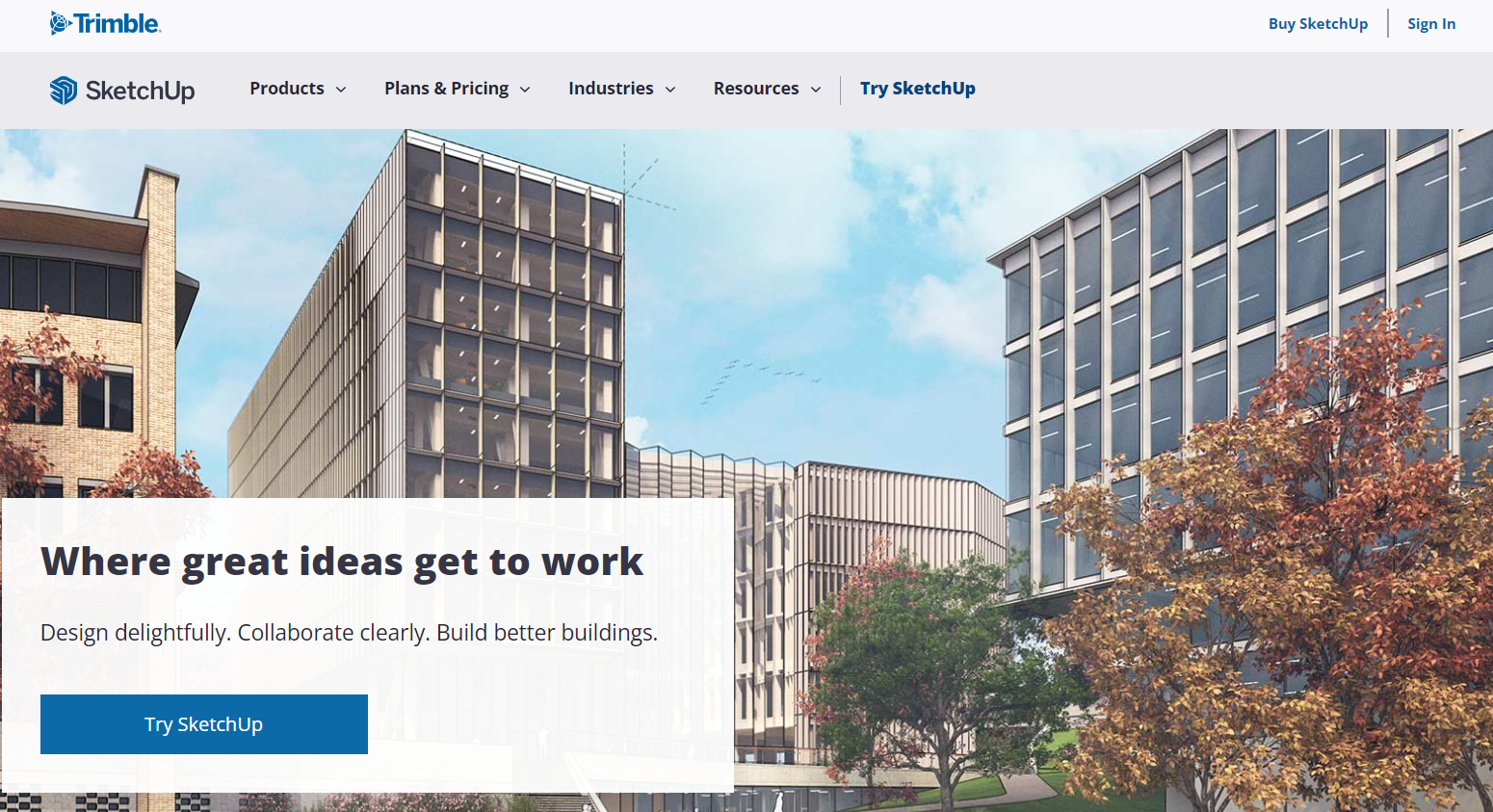
Cinema 4D
Cinema 4D, developed by MAXON, is a powerful 3D modeling, animation, motion graphic, and rendering application widely used by professionals in the fields of film, television, advertising, and design. Its robust feature set, intuitive interface, and flexibility make it a popular choice among creative professionals. Here’s what’s good about it:
- Ease of use: Cinema 4D has a user-friendly interface that is intuitive and well-organized, making it accessible for beginners, while its depth of features satisfies the demands of more experienced users.
- Powerful modeling tools: It offers a comprehensive set of modeling tools able to handle simple modeling tasks to complex sculpting for detailed character models.
- Advanced rendering options: Cinema 4D includes advanced rendering capabilities with its built-in physical renderer, as well as support for third-party renderers like Arnold, Octane, and Redshift.
- MoGraph Module: This feature is specifically designed for motion graphics. It allows for the creation of complex animations and effects with procedural techniques that are both powerful and easy to manage.
- BodyPaint 3D: Integrated directly into Cinema 4D, BodyPaint 3D is a set of tools for creating detailed textures and UV editing, making it easier for artists to create detailed and realistic textures.
- Integration and Compatibility: Cinema 4D offers excellent integration with Adobe After Effects and other CAD applications. It also supports a wide range of file formats for seamless interoperability with other software.
On the flip side, here are a few disadvantages of using Cinema 4D as an image and model creator:
- Cost: One of the significant drawbacks of Cinema 4D is its cost. It is a premium software with a price tag of $1,399 per year that might be prohibitive for individual artists or small studios. However, MAXON does offer different licensing options, including short-term and student licenses.
- Learning curve for advanced features: While Cinema 4D is praised for its ease of use, mastering its more advanced features and modules, such as character rigging and advanced texturing, can be challenging and time-consuming for beginners.
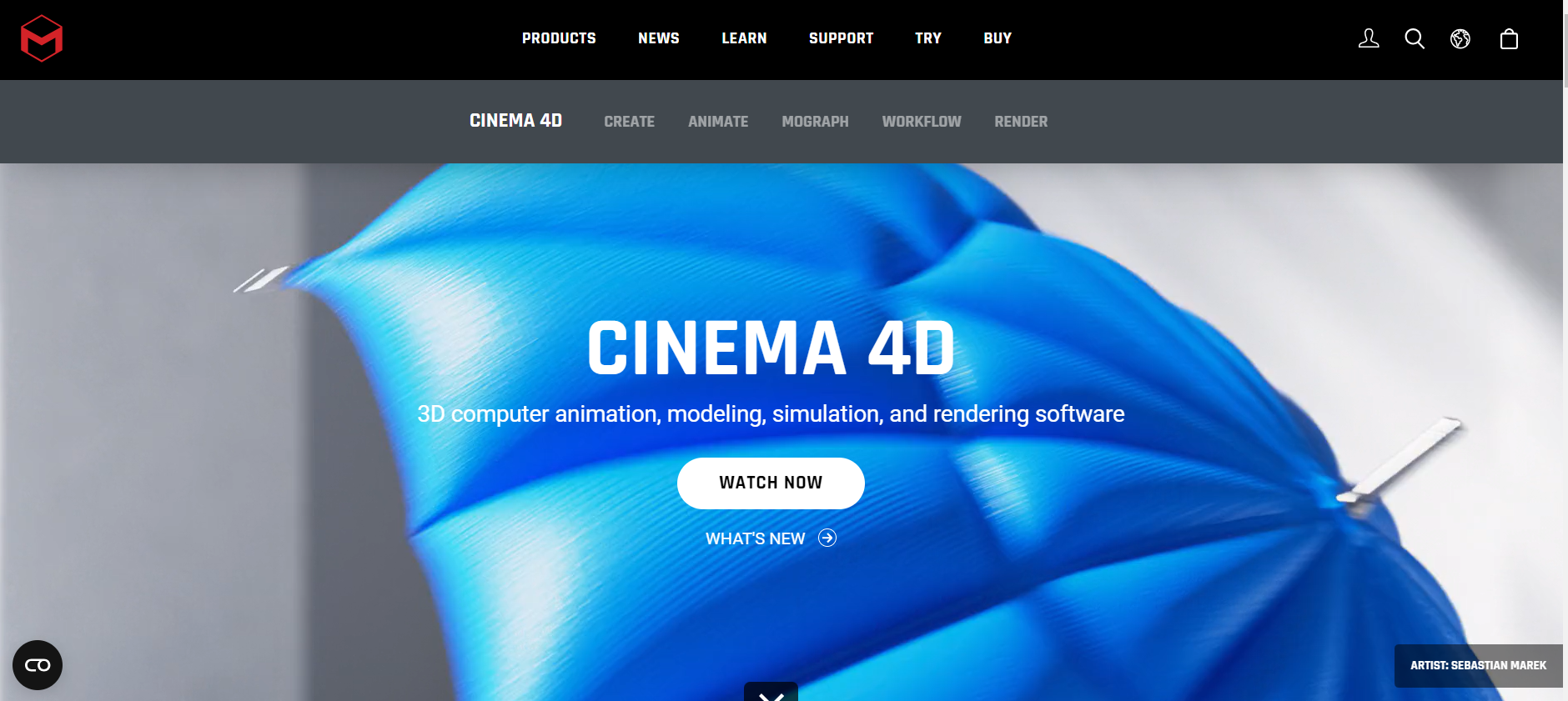
3DS Max
Last but not least, 3DS Max, also developed by Autodesk, is another worthy 3D modeling, animation, and rendering software widely used in the fields of architecture, game development, visual effects, and design visualization.
Some of the main features of this platform are:
- Powerful modeling tools: With 3DS Max, it’s fairly simple to transform 2D sketches into detailed 3D models. Tools like spline-based modeling, which allows for precise control over shapes derived from 2D lines, are particularly useful for this conversion process.
- Support for DWG and other CAD formats: The formats supported include DWG and DXF, among others. This is especially useful for architects and designers who start their projects with 2D CAD drawings.
- Modifiers and customization: The software provides a good selection of modifiers that can be applied to 2D shapes to quickly generate complex 3D forms. These modifiers allow for non-destructive editing, meaning users can experiment with different 3D outcomes and spatial positions without altering the original 2D geometry.
And now for a few downsides:
- Focused on 3D: Despite its capabilities in handling 3D conversions, 3DS Max is primarily a 3D modeling tool. Users who work mostly with 2D might find it more complex and feature-rich than needed for simpler conversion tasks.
- Cost: At $235 per month, this tool requires a significant investment.
- Resource-heavy: High-quality 3D modeling and rendering in 3DS Max requires a powerful computer with high-end specifications. This can be a significant drawback for individuals or small studios with limited hardware resources.
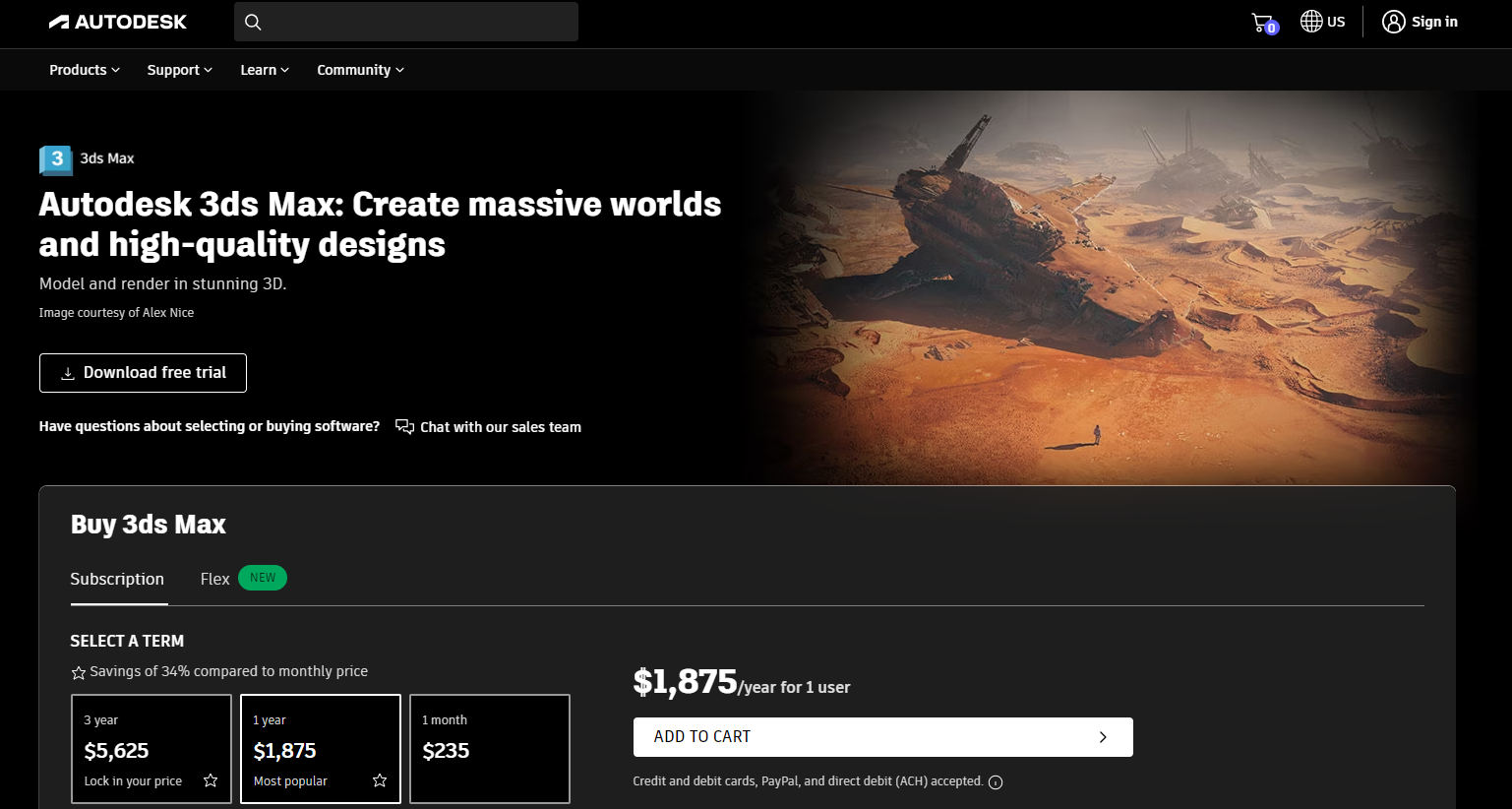
3D tool comparison
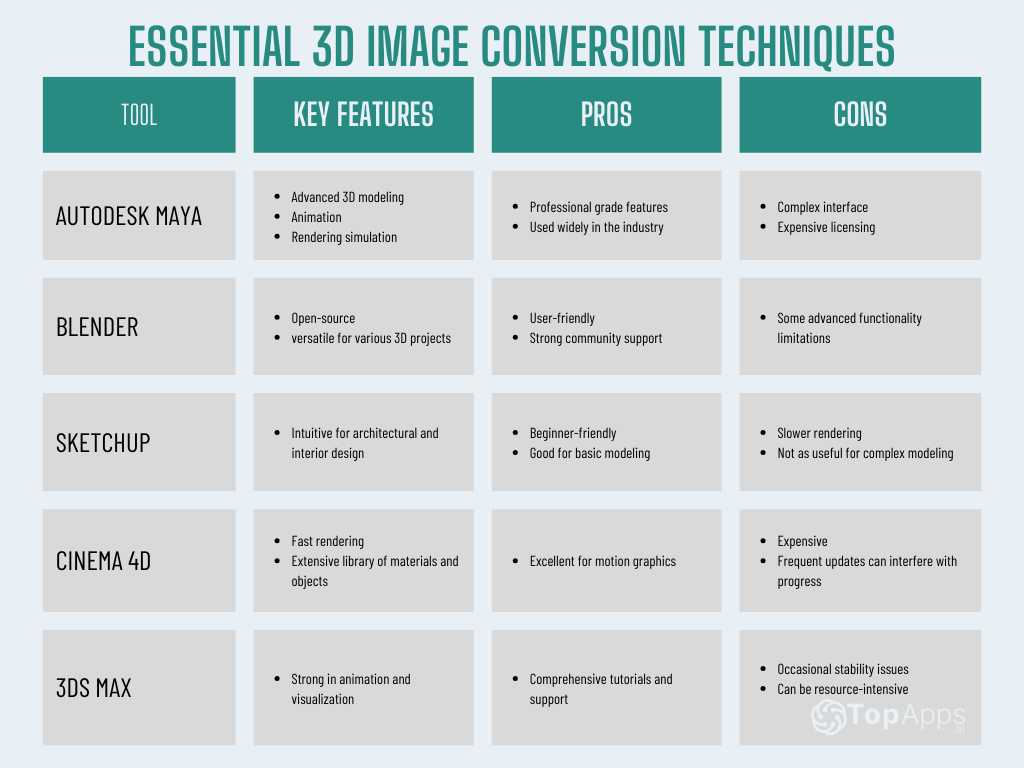
Mastering the art: Essential 3D image conversion techniques
- Learn the nuances of three main techniques for converting 2D images into 3D.
- Understand the versatility and applications of each method.
Stereoscopy
Stereoscopy is a popular method for 3D image conversion, splitting a single image into two slightly different ones. The technique tricks our brain into perceiving depth, offering an immersive experience that brings flat images to life.
In stereoscopy, two pictures are taken from slightly different angles. The left image is then presented to the left eye, and the right image to the right eye. The separation mimics natural human vision, replicating depth and a sense of three-dimensional space.
- Tools like NVIDIA 3D Vision Photo Viewer or Stereophoto Maker can be used for creating stereoscopic images.
This technique has applications beyond mere visualization. For instance, 3D films and virtual reality systems bank heavily on this method. But it’s not just about entertainment. Industries like aviation and healthcare use stereoscopy for training simulations and intricate surgical procedures, respectively.

The beauty of stereoscopy lies in its simplicity. When harnessed correctly, it can transform 2D designs into detailed, multi-dimensional visuals. Consider a design engineer working on a new automotive model. Stereoscopy allows them to explore their design in a 3D space, providing a more holistic understanding of the product.
Note that stereoscopy is different from stereolithography, where a high-quality STL file (Standard Triangle Language file) can create a 3D model. These models from the STL files are most often used in digital printing.
Volumetric conversion
Volumetric conversion is a method used to create 3D models from 2D images, adding depth and perspective.
At a high level, volumetric conversion involves analyzing a set of 2D images and converting the visual information into a 3D space. It’s a complex process, often used in medical imaging where multiple 2D radiographic images are taken and then processed using algorithms to create 3D renditions of organs or body parts.
- Software like OsiriX MD (for medical imaging) or Agisoft Metashape (for photogrammetry) are suitable for volumetric conversion.

This technique bears the gift of precision – an imperative component in fields like architecture or medical imaging. Here, an error of even a millimeter can translate to significant complications. Hence, the preciseness of volumetric conversion is highly prized.
Let’s take the example of an architect designing a new building. They start with a 2D floorplan, but to really visualize the finished product and ensure everything fits together, a 3D model becomes essential. Here, volumetric conversion comes into play, allowing the architect to precisely model the building in 3D, identifying any potential design conflicts before they become a problem.
Multi-view reconstruction
The third technique, multi-view reconstruction, uses multiple 2D images taken from different angles to construct a comprehensive 3D model.
In multi-view reconstruction, several images are captured from different viewpoints, feeding into software that stitches them together into a 3D model. The magic lies in the algorithm’s ability to extract depth information from multiple angles, combining them to create a detailed three-dimensional representation. One image won’t do here – the more the merrier.
This technique isn’t restricted to static images. It can also work with video data, as demonstrated by the rapid development in surveillance systems and interactive media.
- Tools like RealityCapture can be used for multi-view reconstruction, especially in archaeological or architectural applications.
Think of an archaeologist trying to
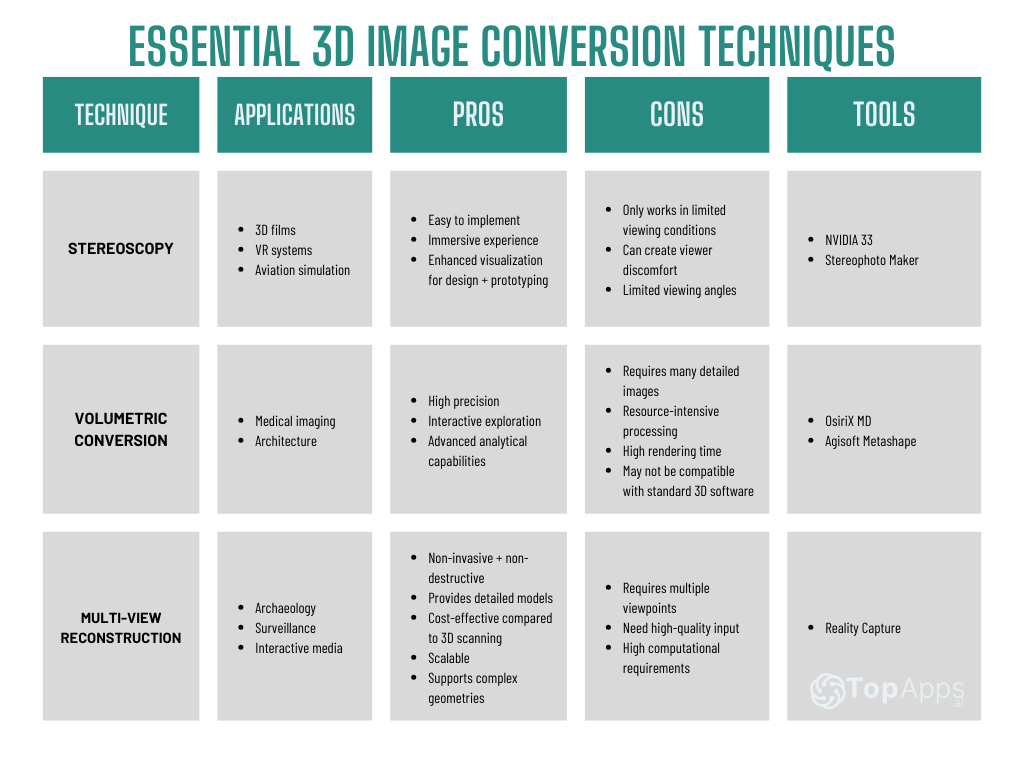
Wrapping Up
With all these image conversion tools, it’s easier than ever to turn a 2D image to 3D perfection. Give any one of these options a try and see what you can create! There are tools available at pretty much any price point and you should always opt for a free trial whenever possible before committing. Remember, there’s no one-size-fits-all answer here, and all the techniques and tools have their strengths and challenges. But don’t worry, there’s a perfect option waiting for you.
Lauren Smith
TopApps writer
Recent Articles
Introduction AI art prompts are no longer a novelty; they’re a game-changer in the art world. Harnessing the power of AI to...
Read MoreIntroduction AI Art Generators are no longer a novelty. They’re a game-changer. In 2024, they’ve become the secret weapon for artists worldwide,...
Read MoreIntroduction Adobe Express AI isn’t just another tool in your design arsenal. It’s a game-changer. In the realm of design, where creativity...
Read More